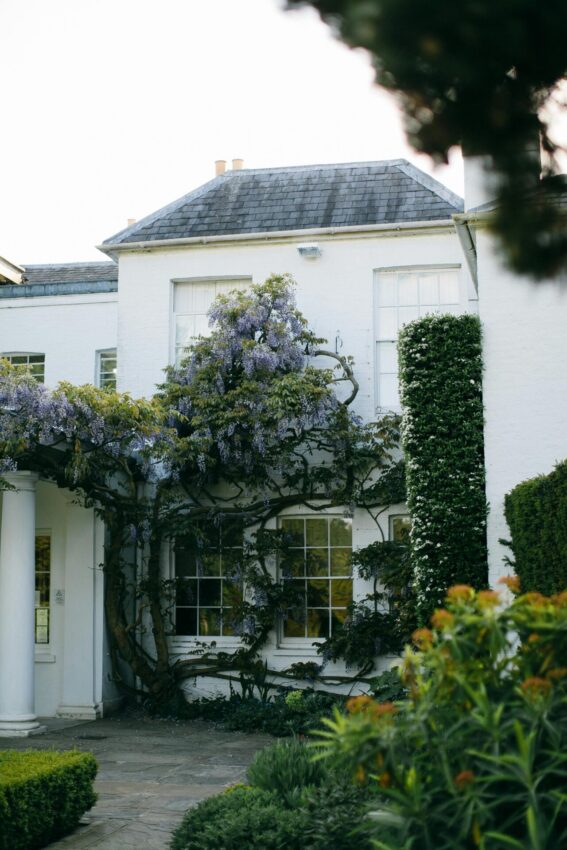One of the best things about older homes is their timeless charm. The brickwork. The stone. The sense that someone was there long before you, planting roses or laying stones. The history is hard to fake.

But that history can come with weeds, cracks, and garden furniture that looks like it gave up back in 2009. Character, yes, but also draughts through the patio doors and a yard you don’t actually sit in.
The good news is that you don’t have to start again. A few smart tweaks can pull the outside into the present while still appreciating the property’s age.
Get the furniture right
This is where many older gardens stumble. The bones look great, but then someone plonks a cheap plastic table in the middle, and it all falls apart.
Outdoor metal furniture is your best friend here. It lasts. It suits almost any backdrop. It looks deliberate instead of temporary.
The sets at lazysusanfurniture.co.uk are built for precisely this kind of setting — weatherproof, solid and stylish enough to sit comfortably against brick, stone or even modern bi-fold doors. A dining table, if you have the space. A neat little bistro set if you don’t. Either way, you’ll have somewhere you actually want to sit.
Spruce up the space
Not glamorous, but necessary. Grab a broom. Fire up the jet washer if you have one. Remove the moss between the paving stones and the grime on the brick.
It’s surprising how much bigger and newer everything feels when it’s clean. Suddenly, that cracked path looks “charming” instead of dirty.
Use what’s already there
Old houses often come with features you’d never bother to build today, but they’re brilliant once you notice them. A gate with a bit of ironwork, for example. A stone wall that’s gone soft with age. Even a half-broken arch covered in ivy.
Don’t hide these things. Frame them. Paint the wood around them so the detail pops. Put a pot of lavender against the wall. Highlight rather than replace.
Layer in greenery
Large gardens often have overgrown corners. Don’t rip them out unless necessary. Tidy, trim, then add your own touches.
Cluster pots in odd numbers. Terracotta looks great against old stone. Herbs do double duty: they’re hardy, and you get something to throw in the pan. A small bay tree in a container instantly makes the space look styled.
It doesn’t have to be perfect. In fact, the mix of old shrubs and new planting usually looks better than a total garden makeover.
Light it properly
There’s no reason to head indoors the second the sun drops. A string of lights across a wall, solar spikes down the path, or just lanterns on the table: none of it costs much. However, it changes how you use the space. Suddenly, the garden isn’t just for daytime. It’s for evenings with friends, late-night drinks, even breakfast when the mornings are dull.
And lighting does one other thing: it brings the textures of old walls and stone to life.
Add softness
Metal furniture gives you the structure. Plants bring life. Now, you need comfort. Something like a rug that can take the rain or cushions you don’t mind leaving outside. Maybe a throw or two for those nights when you swear it would be warm, but the air says otherwise.
These little extras turn somewhere to sit into somewhere you stay.
Don’t fix everything
The temptation is to smooth, polish, and straighten. Don’t. A garden that’s too perfect feels fake.
That hairline crack in the paving is fine. The ivy that insists on sneaking up the side wall? Let it. Those things are what make the house look like it’s been there a while. Which, of course, it has.
Old bones, new life
Modernising the outside of an older home isn’t about starting fresh. It’s about cleaning up what’s there, making it comfortable, and adding just enough modern touches — furniture, lighting, and greenery — to make it usable on a day-to-day basis. Get the balance right and the space feels timeless.
